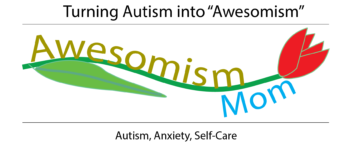 (With special thanks to Education.com)
(With special thanks to Education.com)
Getting Stressed trying to figure out how to keep your kids occupied this summer? I will be putting out a few blogs over the summer with some awesome ideas. Yes, there are ways to have fun and learn all at the same time!
I have been a fan of education.com for years, I love their worksheets and have used it in my homeschooling. This website is great for homeschoolers, as well as a supplement for schoolwork. Here is an example of the type of items on their website. While this is for 4-6 year olds it can also be used for special-needs children of all ages. I love the versatility of these types of activities. Doing educational projects with Peyton is fun and lowers his stress level, all while he is learning. I really love this project as it incorporates math and art. Teaching creative ways to learn math, works very well with Peyton. This is a great example of helping turn autism into Awesomism!
Note: Some great worksheets for the following exercise can be found at https://www.education.com/resources/geometry/
Shape Art: Mix Art with Geometry!
Does the idea of taking your child to a museum sound daunting? Is the local art mecca too far away, or not too keen on pint-sized patrons? Create your own museum! Not only will your child get a chance to look at some pretty amazing art, you can teach some important concepts about shapes in the bargain.
If you’ve got a kindergartener, it’s likely that he can already recognize the basic shapes. But can he identify them by their attributes? Does he know that a triangle has three sides, or that a square is a square (not a rectangle) because it has four sides that are all the same length? Getting comfortable with the shapes and their attributes is a founding concept for understanding more abstract geometry later on. Here’s a fun way to sneak in some geometry, in an artistic way.
What You Need:
A computer
Paper
Water colors
Black permanent marker
What You Do:
Prepare Ahead of Time. You’ll need to do a little research before you invite your child to the “museum”. Take a trip to the library, or look up a few artists online. Whichever method you choose, print out some color copies of their work, or purchase a few posters or art postcards. Unsure which artists to choose? Kandinsky, Miro, and Calder all exhibit excellent use of shapes in their art. Once you have your pictures, find a blank wall and hang them up exhibit style, (at a kindergartener appropriate height!) Then issue an invitation to visit the museum.
Celebrate Museum Day. Tour your child through your museum. As you look at the pictures, ask questions like, “What shapes do you notice in the art?” Let her use her finger to outline circles, triangles, squares, rectangles, maybe even a hexagon or two. Talk about what makes a triangle a triangle, and what makes a square a square, as opposed to a rectangle. Point out some shapes that she may be unfamiliar with, like ovals, or octagons, being sure to give her some visual clues to make memory easier, like the fact that eggs are the shape of ovals, and stop signs are the shape of octagons. You can hop online for some more information about the artists, or more examples of their work.
Make Your Child the Artist. After your field trip, give your child the chance to make some art of her own. First, have her describe the attributes of a shape. As she describes it, draw it for her on construction paper, using a thick black permanent marker. Create at least three shapes. Then give your child a set of watercolors and set her to work. The thin paint will look beautiful against the contrast of the bold black shapes. The end result? A beautiful piece of art for your refrigerator and a deeper understanding of geometric shapes.
